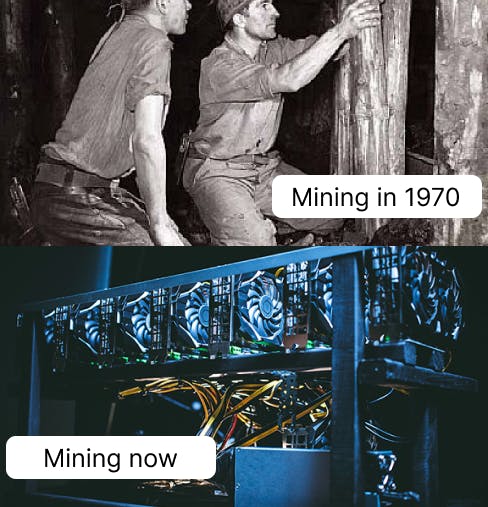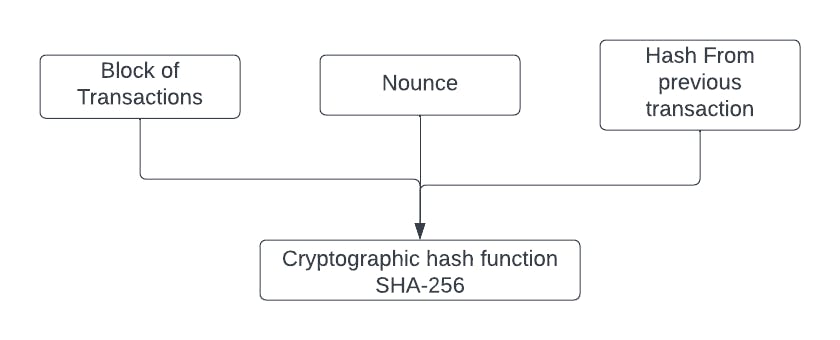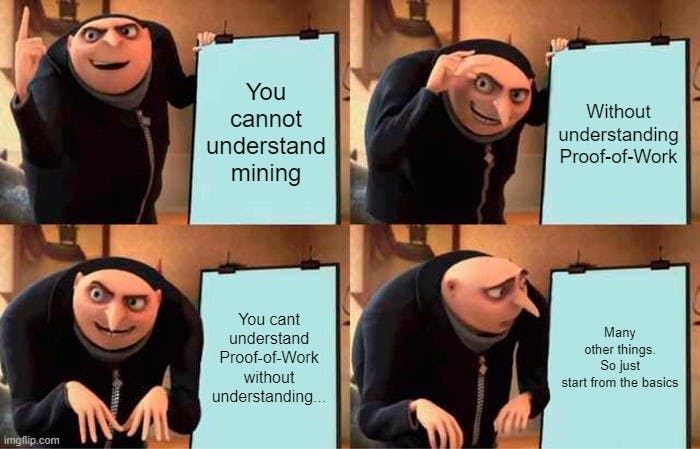Previously, we understood the word “Mining” to be the extraction of valuable minerals or other geological materials from the Earth. But in recent times when talking about the blockchain, the word “Mining” tends to pop up and it seems to be a major part of the discussion. So you might be thinking how do they relate, what do we mean when we talk about mining and blockchain together.
If you are a bit confused about all these fear not! I got you😎.
This article will be focusing on mining on the Ethereum blockchain network. It will cover the definition of mining in blockchain technology, the importance of mining, why miners exist, who can become a miner, how to mine Ethereum transactions and the different methods of mining.
Let’s goooooo…🚀🚀

What is Mining?⚒⚒
In blockchain technology, Mining is the process that helps you create new blocks of transactions that will be added to the blockchain network. These blocks of transactions added will be distributed on the blockchain network.
When mining, you create a transaction hash in a block that cannot be easily forged and this helps to keep the blockchain network secure from attacks. Mining plays a key role in Ethereum blockchain because it uses a consensus protocol Proof of Work (PoW).
In simple terms, Mining is like a check system for the blockchain network. Like a cashier in a banking hall that accesses your check to ensure it's not a fraud before approving the transaction. The best part is after a miner carries out this assessment and the block is approved, a reward is given to the miner🤑🤑.

What is a Consensus Protocol
When trying to explain Proof of Work as a consensus protocol, we have to first understand the meaning of the word consensus. According to the Merriam Websters Dictionary, the word “Consensus” simply means general agreement.
The Ethereum Blockchain network runs on a distributed decentralized database. For a block to be accepted and added to the chain, each of these distributed nodes needs to agree on the current state of the network.
Proof of Work
With the above explanation of a consensus protocol, we can simply define Proof of work as a process on the Ethereum Network whereby all nodes on the network agree on the current state of the blockchain. This agreement is what helps keep the network secured.
The “work” in Proof of Work
From the explanation above we now understand that Proof of work is a consensus mechanism. Now let's look at what goes on behind the scene before this agreement occurs. We need to understand the criteria that must be met before a miners block is accepted🤔.
These criteria are met through a computationally hard mathematical problem that miners need to solve to provide a certificate of legitimacy. We want to prove that the miners put in energy and computational power to access the block faster than every other miner. If this is proven to be true the miner gets their reward💰.
On the Ethereum block network, the consensus protocol used currently requires miners to go through an experimental “work” process which is:
- Select a group of transactions to include the potential block
- Based on the block they create, the network chooses a slice of data (roughly ~1GB in size) from the current state of the blockchain network based on its rules.
- The slice of the dataset is put through a hashing function to calculate a target value. (This target is a number, which is inversely proportionate to the mining difficulty).
- The miner then tries to find another random number called the nonce.
- Now the combination of the dataset, target, nonce, and a couple of other values that have been put through a hashing function should result in a number that is lower than the target.
- The higher the mining difficulty, the lower the target, this rule makes it harder to find a nonce that satisfies this condition.
- Miners keep using trial-and-error to find a valid value for the nonce which satisfies the condition.

There is no formula to calculate the nonce. The number of miners on the blockchain network determines the mining difficulty. The higher the number of miners the higher the mining difficulty because the miners will have a lesser chance of getting a nonce that satisfies the condition.
Later this year, Ethereum will be changing its consensus protocol from Proof-of-work to Proof-of-Stake.
Importance Of Mining🔨⛏
Miners do not only add new blocks of transactions to the networks, there are also other advantages of mining on the blockchain network.
Secures the network
Miners produce a certificate of legitimacy that all transactions in their block are valid. Producing this certificate is a computationally complex challenge, meaning that every transaction in that miner's block has been properly accessed. If a fake or an invalid transaction is detected in the miners' block, the entire block is rejected, and wil not be added to the chain. The miner has lost the computational energy, time, and money used in creating that block.
This assessment process is what ensures that hackers are not able to add fake, spam, or invalid transaction to the blockchain network, thereby keeping the network safe and secured.
Prevents double spending
Double spending is a major flaw in the digital financial system, this occurs when a single token is spent more than once. This causes inflation of that currency hence reducing its value.
One of the ways double-spending is prevented is through the assessment done during the mining process by the consensus protocol. This ensures that no transaction is carried out twice.
How to Mine Ether🥇💰
ETH or Ether is a cryptocurrency. It is scarce digital money that you can use on the internet – similar to Bitcoin. If you’re new to crypto, here's how ETH is different from traditional money.
There are six unique steps you can follow to mine Ether and get rewarded.
- Select your mining approach
- Choose a mining pool
- Create an Ethereum wallet
- Update your GPU drivers
- Install Ethereum mining software
- Collect your rewards
1. Select your mining approach When mining Ethereum there are 3 different mining methods you can use:
- Pool Mining: this type of mining method is where miners combine their computing power to solve Ethereum blocks faster.
- Solo Mining: This approach is where only one miner decides to solve the Ethereum block puzzle alone, this approach costs more.
- Cloud Mining: In this type of mining you pay another miner to do the mining for you.
2. Choose a mining pool To help reduce cost and time spent on mining it is highly recommended that you pick a mining pool you want to be part of. There are many mining pools, e.g. ethermine, f2pool, etc.
3. Create an Ethereum wallet You need to create an Ethereum wallet. You can create a wallet on Metamask.
4. Install Ethereum mining software You can choose from the different types of mining software. Example ETHminer, Claymore, etc.
5. Update your GPU drivers Your GPU must be up to date and ensure it is working efficiently. You can install the latest available updates provided by your GPU manufacturer AMD or Nvidia. 6. Collect your rewards When you’ve mined for a while, go to your pool’s website to check your earnings and get your rewards.
P.S: The best type of mining approach is the Pool mining approach, it saves cost and time.

Cost of Mining
- Hardware cost: This is the price necessary to build and maintain the hardware used in mining.
- Electrical costs:is the amount put into powering the mining rig
- Potential cost: is the value of the coolers, ventilators, energy monitors, electrical wiring, solar farms, and other equipment used to support the mining rig.
Miners Reward
For all their work and all the money spent during the mining process, miners earn their reward. The work miners put into producing certificates of legitimacy for each transaction and executing transactions on the network, they are given new coins. In Ethereum, when a miner successfully mines a block, they receive 2 ETH for their hard work🤑🤑.
Conclusion
The Importance of mining to the blockchain network can not be over-emphasized. It keeps the blockchain secured and verifies transactions. The concepts discussed in this article are just the basic thing you need to know about the mining as a beginner.

